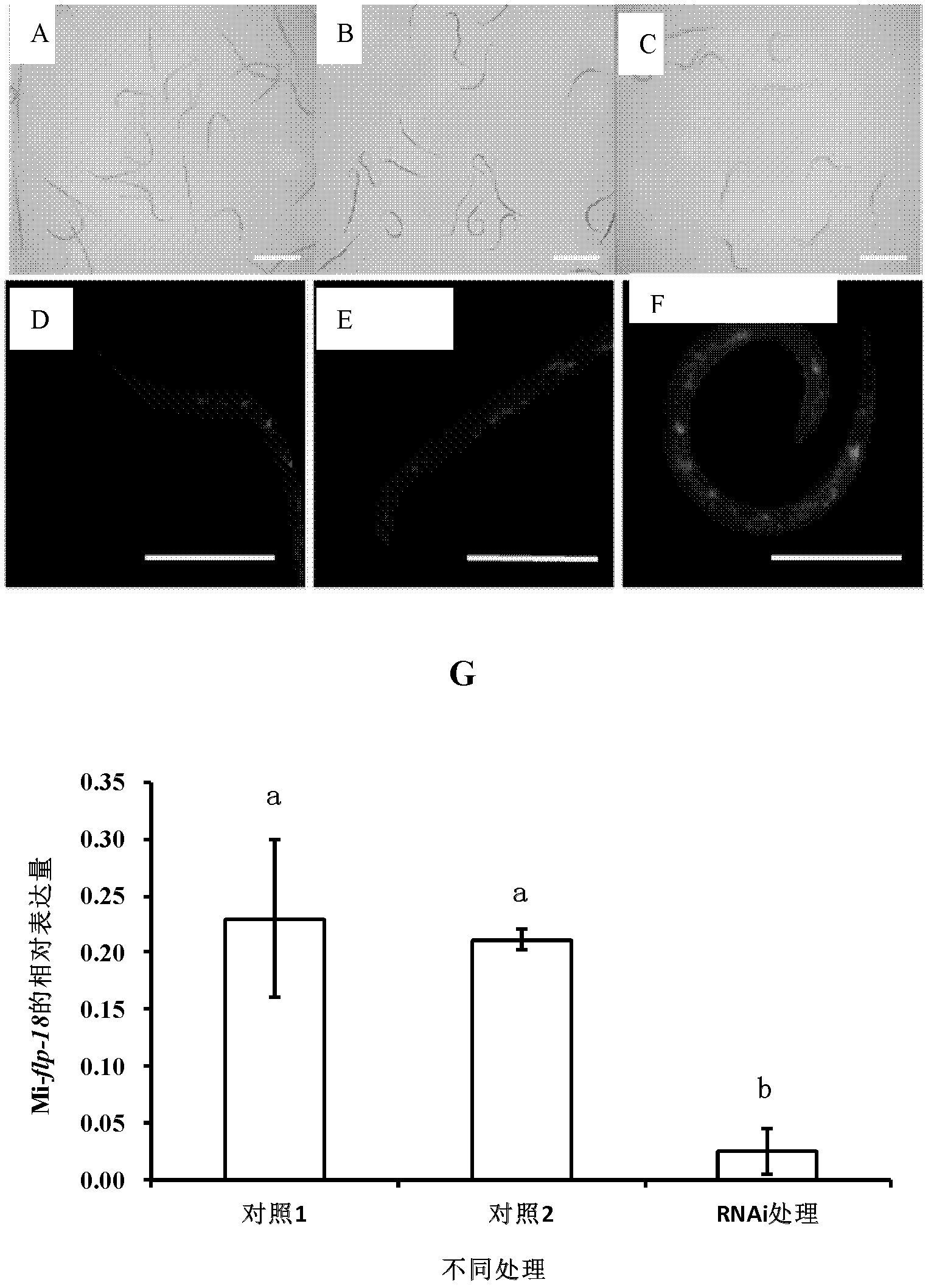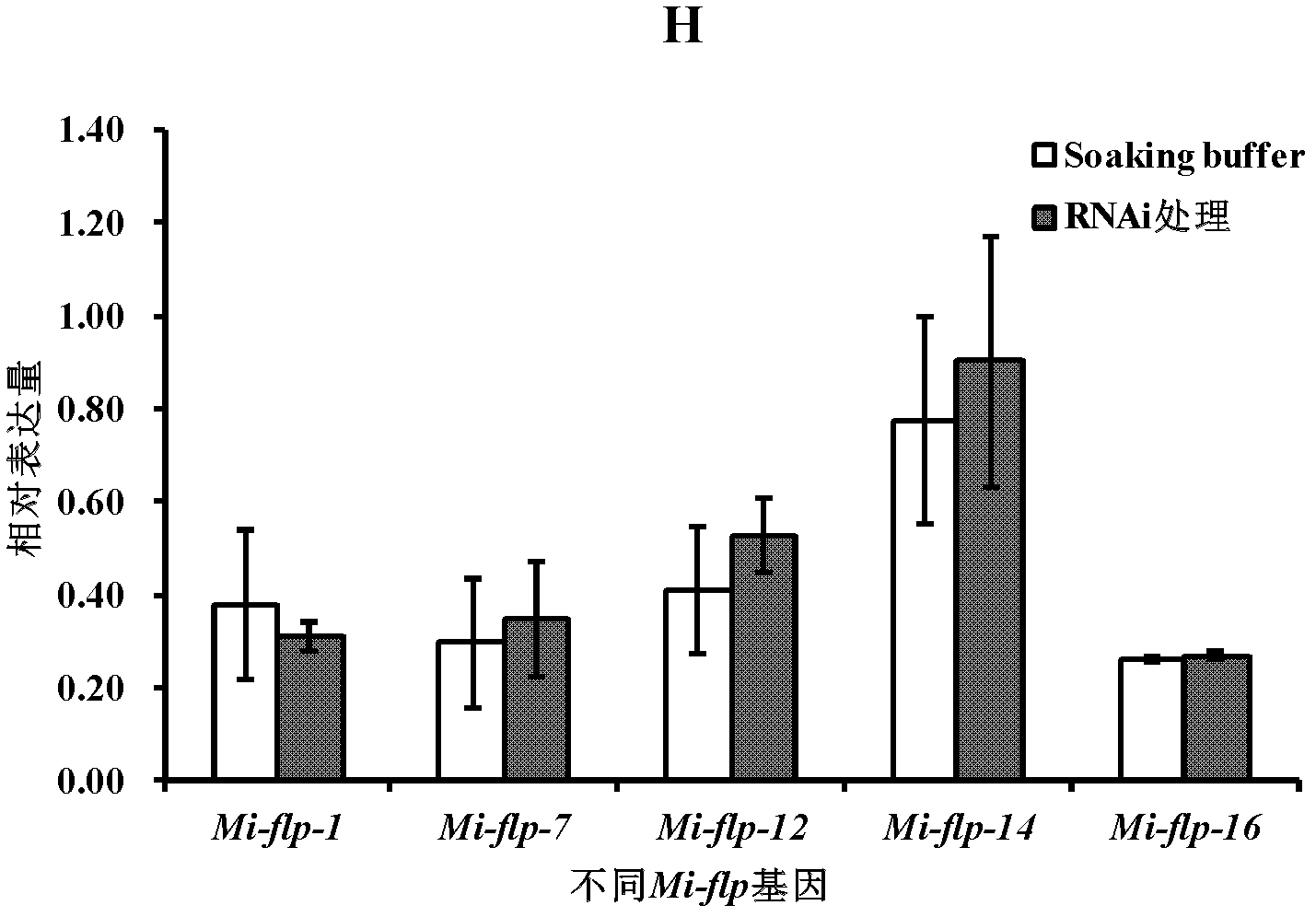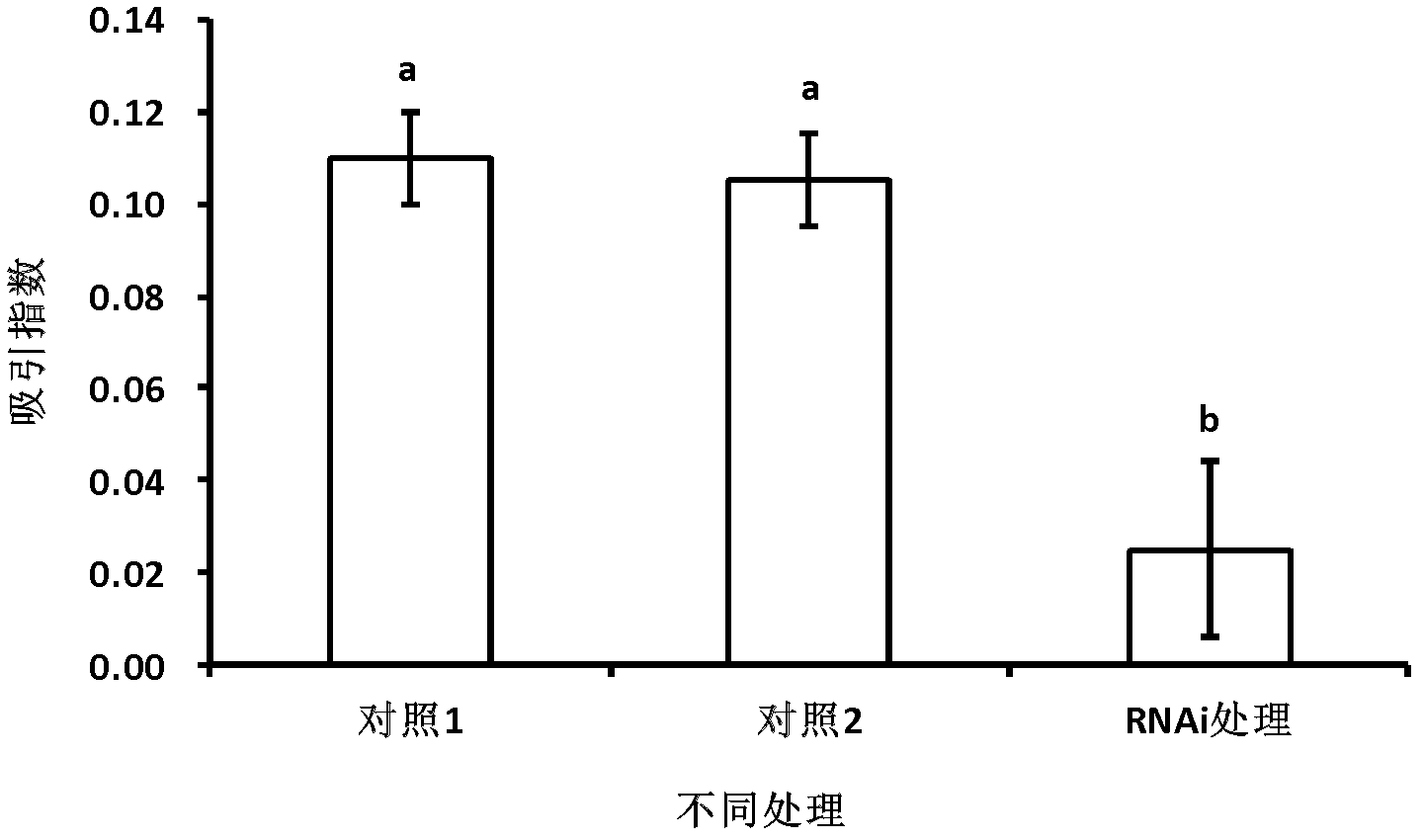dsRNA (ribonucleic acid) capable of inhibiting FLPs neuropeptide gene and application thereof
A technology for encoding genes and DNA molecules, applied to dsRNA that inhibits FLPs neuropeptide genes and its application fields, can solve problems such as environmental, human and animal safety hazards, and achieve the effects of reducing infection and impact
- Summary
- Abstract
- Description
- Claims
- Application Information
AI Technical Summary
Problems solved by technology
Method used
Image
Examples
Embodiment 1
[0034] Embodiment 1, the acquisition of dsRNA (Mi-flp-18 dsRNA)
[0035] 1. Cultivation and collection of root-knot nematode incognita
[0036] Meloidogyne incognita was isolated from a greenhouse in Shouguang, Shandong, and the hatched second-instar larvae were inoculated into tomato seedlings (Lycopersicon esculentum cv.) grown in sterilized soil for 30 days. After 2 months, collect the tomato root system, wash it clean, place a 100-mesh sieve of appropriate size in a petri dish, place a piece of filter paper on the sieve, place the picked eggs on the filter paper, add deionized water to cover the egg mass, and leave at room temperature (25° C.) for 72 hours, collect the water under the net, and centrifuge at 5000 rpm for 2 minutes. The collected sediment is the second instar larvae of Meloidogyne incognita.
[0037] 2. Double-strand synthesis
[0038] 1), using RNase Kit (Tiangen) to extract the total RNA of nematodes, using M-MLV (Promega) for reverse transcription to ob...
Embodiment 2
[0078] Embodiment 2, the impact of dsRNA (Mi-flp-18dsRNA) on the second instar larvae of Meloidogyne incognita
[0079] 1. Uptake of dsRNA by second instar larvae of M. incognita
[0080] 1. Reagents
[0081] Fluorescein isothiocyanate (FITC) was used as a marker of absorption efficiency in the test;
[0082] Use soaking buffer to promote the absorption of dsRNA by M. incognita.
[0083] Soaking buffer (dissolve FITC, resorcinol, and spermidine in DEPC water, so that the concentration of resorcinol is 2.5%, and the concentration of spermidine is 150 mM).
[0084] Soaking buffer containing Mi-flp-18dsRNA: the dsRNA aqueous solution (Mi-flp-18dsRNA) obtained by Example 1 is mixed with Soaking buffer, the final concentration of Mi-flp-18dsRNA in the mixed solution is 1mg / ml, and Soaking buffer The concentration is diluted to 0.5 times of the original.
PUM
 Login to View More
Login to View More Abstract
Description
Claims
Application Information
 Login to View More
Login to View More - R&D
- Intellectual Property
- Life Sciences
- Materials
- Tech Scout
- Unparalleled Data Quality
- Higher Quality Content
- 60% Fewer Hallucinations
Browse by: Latest US Patents, China's latest patents, Technical Efficacy Thesaurus, Application Domain, Technology Topic, Popular Technical Reports.
© 2025 PatSnap. All rights reserved.Legal|Privacy policy|Modern Slavery Act Transparency Statement|Sitemap|About US| Contact US: help@patsnap.com



